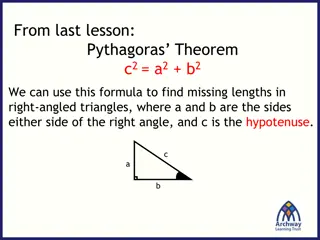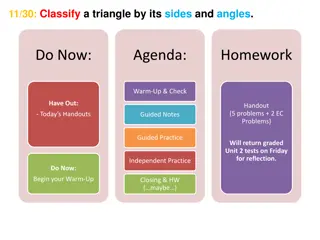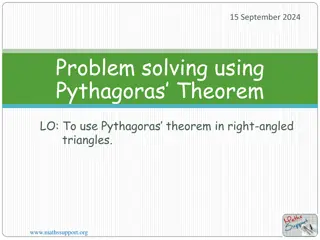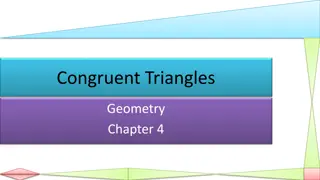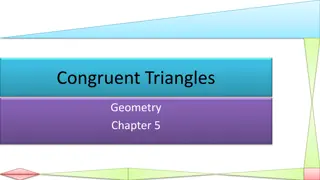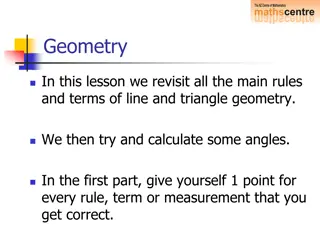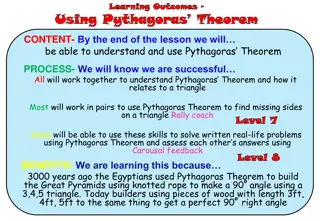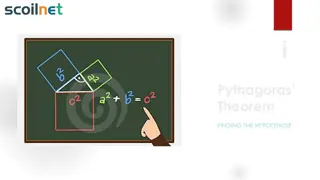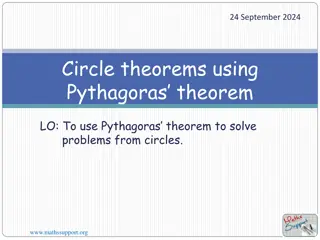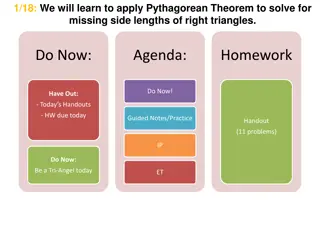Exploring Pythagoras Theorem: Making a 3:4:5 String Triangle
Explore Pythagoras theorem by creating a 3:4:5 string triangle to test object alignment. Learn about Pythagoras, his theorem, and how it applies to right-angled triangles. Follow step-by-step instructions with images for a safe hands-on activity. Discover the significance of the 3:4:5 triangle and its practical application in geometry.
Download Presentation

Please find below an Image/Link to download the presentation.
The content on the website is provided AS IS for your information and personal use only. It may not be sold, licensed, or shared on other websites without obtaining consent from the author. Download presentation by click this link. If you encounter any issues during the download, it is possible that the publisher has removed the file from their server.
E N D
Presentation Transcript
Using Pythagoras Theorem Making a 3:4:5 string triangle to check if an object is upright
Stay safe Whether you are a scientist researching a new medicine or an engineer solving climate change, safety always comes first. An adult must always be around and supervising when doing this activity. You are responsible for: ensuring that any equipment used for this activity is in good working condition behaving sensibly and following any safety instructions so as not to hurt or injure yourself or others Please note that in the absence of any negligence or other breach of duty by us, this activity is carried out at your own risk. It is important to take extra care at the stages marked with this symbol:
Who was Pythagoras? Pythagoras lived in ancient Greece, about 2500 years ago He is best known for using math's to work out the size of triangles
What is Pythagoras Theorem? Pythagoras theorem is about the sizes of right-angled triangles When you know the sizes of two sides, you can use it to work out the other
Pythagoras Theorem Pythagoras' Theorem is: The square of the hypotenuse is equal to the sum of the squares on the other two sides a2 = b2 + c2 From this, we know if the length of the two shorter sides are 3 and 4, then the longest side will be 5 This is often called a 3:4:5 triangle
Equipment and Resources You will need: 2 nails Ruler and pencil A hammer Piece of wood Length of string (70cm) Masking tape
Step 1 Mark two points on the wood, 5 cm apart Hammer the two nails into the piece of wood until they stick out by about 5cm Take care not to hit fingers!
Step 2 Tie one end of the string to the first nail, then tie a knot to the second nail Ensure the string is kept tight at all times
Step 3 Slip the string off the first nail, take the long end of string then tie another knot on the free nail as shown. First knot Take off and rotate First knot
Step 4 Repeat step 3 until you have 12 knots Tie the ends together keeping the last gap at 5cm as before Cut off the excess string
Finished example 5 3 4
Put it into Practice Tape your string onto a window 4 knots at the bottom Put this edge against the object you want to check
Is the Cupboard Perpendicular to its Base? String is tight String against object String is parallel to the base of the cupboard Cupboard is Perpendicular
Is the Machine Perpendicular to its Base? String sagging String against object String is parallel to the base of the machine The edge of the machine is NOT Perpendicular
Now do this Use your string triangle to check if things you can see are upright What can you see out of the window that you could check? Record your results on the work sheet Object Perpendicular ( or ) Building Tree Fence





